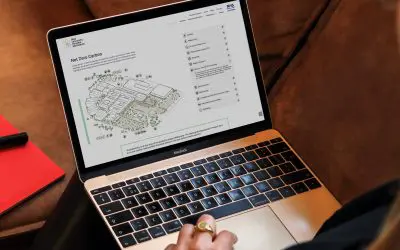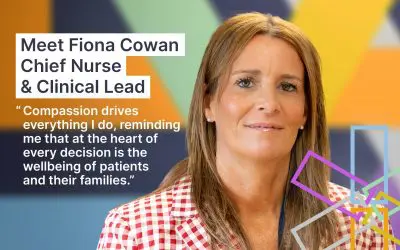Q. What excites you most about your role in building this new hospital?
A. “Working with such an extensive and diverse range of stakeholders within NHS Lanarkshire and the broader community has been an incredibly rewarding experience. From clinical leads, consultants, and doctors to nurses, FM teams, staff, patients, visitors and community forums, every structured meeting has played a vital role in shaping our clinical and operational brief.
This is the largest project team I have worked with, consisting of over 200 consultants, each bringing their expertise and perspective – including planners, ecologists, architects, technologists, services consultants, civil and structural engineers, contractors, cost managers, acousticians, sustainability, communications and art consultants. I’ve never seen a team that is more committed and hard working to pull together and deliver such an important building locally, and a pathfinder project nationally and beyond.”
Q. Could you please share a bit about your professional background and how your skills or experience are helping shape this new hospital?
A. “Having qualified as an architect and worked within real estate for 25 years, I moved to project management to help deliver the Monklands Replacement Project. My background as an architect has allowed me to understand briefing designs and how to bring them to reality from the first concept to reality. This experience was gained from working in various sectors, both public and private, before moving to healthcare. I would like to think that, having worked in different industries and on varying-sized projects from £100,000 to £100 million, globally and nationally, from London to the Shetland Islands, I can bring a wealth of experience and differing ways of working to challenge the normal practice.”
Q. What values or principles guide you in your work, and how have they influenced your approach to this project?
A. “With so many views and competing needs, it is critical to see the bigger picture and not always be swayed by the loudest person in the room. Focus is key as a value – you need to always look to the long-term goals and not lose sight of the importance of the project to the local community. As well as focus, you need to treat everyone equally. You need to listen and understand where people’s views are coming from and not discount these, but balance these against the more holistic and deliverable needs. Using these principles, we will achieve the end goal, a groundbreaking and much-needed replacement hospital.”
Q. Can you please describe a personal highlight of the project so far?
A. “Having been involved in the project in its infancy, through years of design and hard work, I personally felt getting agreement from all parties and signing off on department layouts, and room adjacencies. To have so many people inputting into departmental layouts and getting these approved, costed, and achieving business case approval was a tremendous effort from all involved. This included third-party reviews from the Scottish Government SCIM and Capital Investment Group. I don’t think the project has looked back from this point, and moving forward, the project grew as a team, gained detailed planning permission and involved a construction partner to help deliver the project.”
Q. In what ways do you think the project will leave a lasting legacy for the Lanarkshire community?
A. “For a community to adopt and care for a building, they need to feel part of its development. The engagement with the community has been great, and the local benefits, such as Summer School for young people and apprentices that are taken on by the project team, including the design team and contractor, will provide a direct benefit to the community. The legacy of the building will be to get it right, providing a new clinical model of care in a sustainable, modern and digital environment that will operate as intended. The legacy to the community will be a healthier patient cohort and a hospital that responds and reacts efficiently to the community it serves.”




